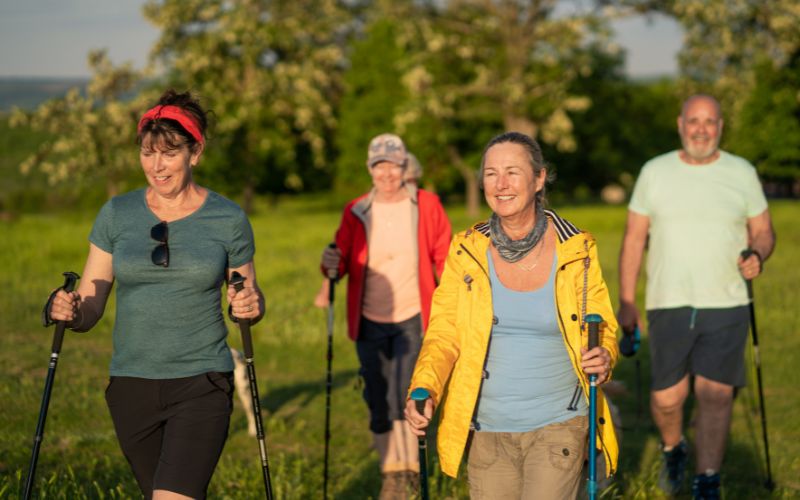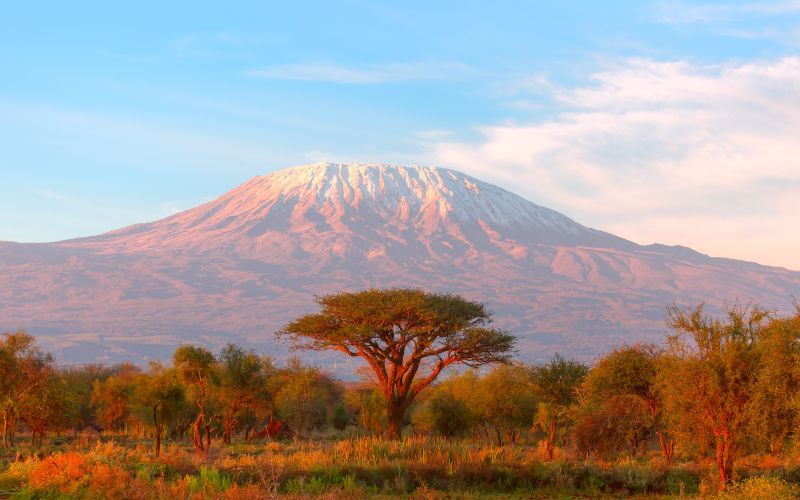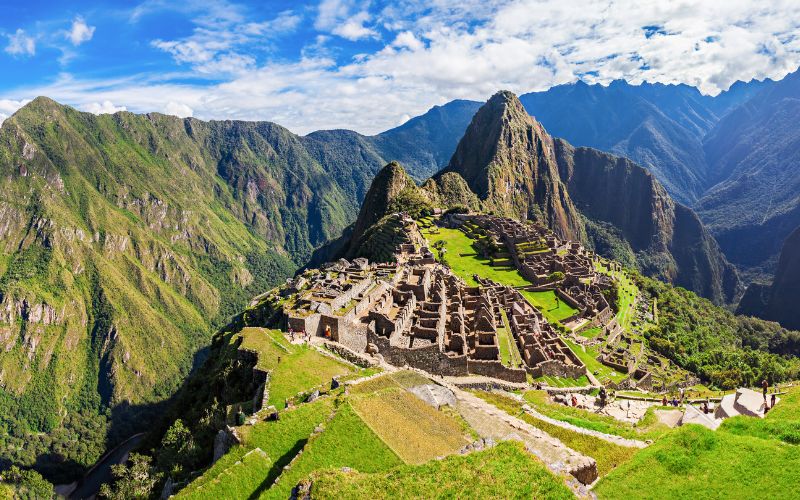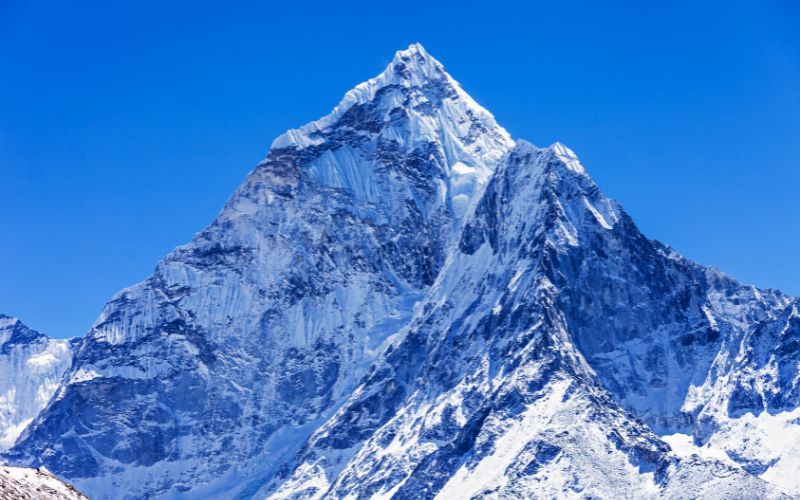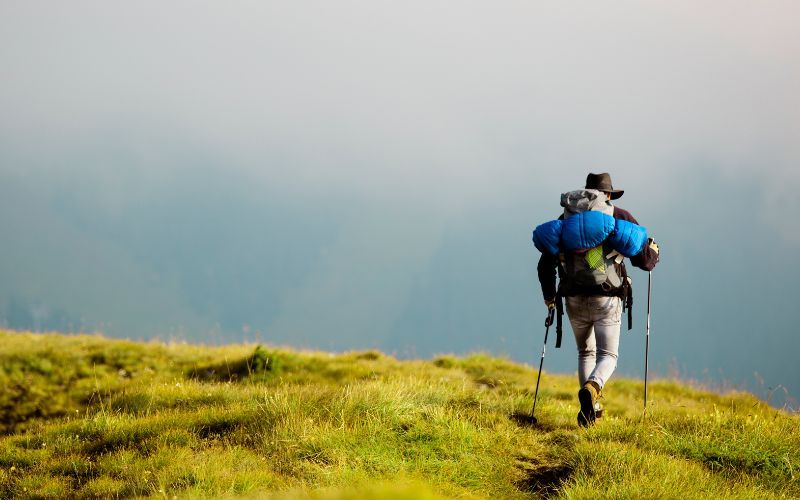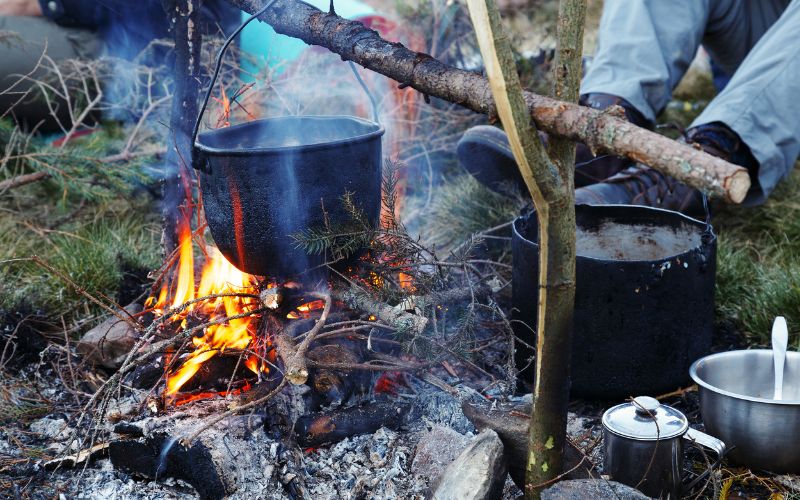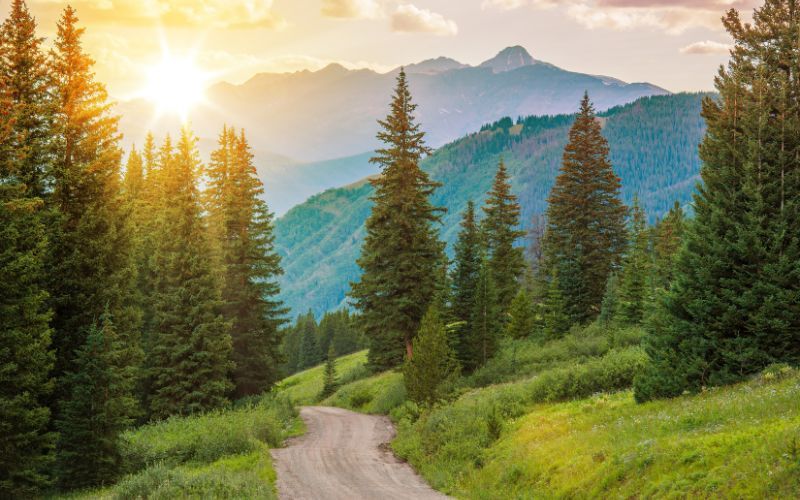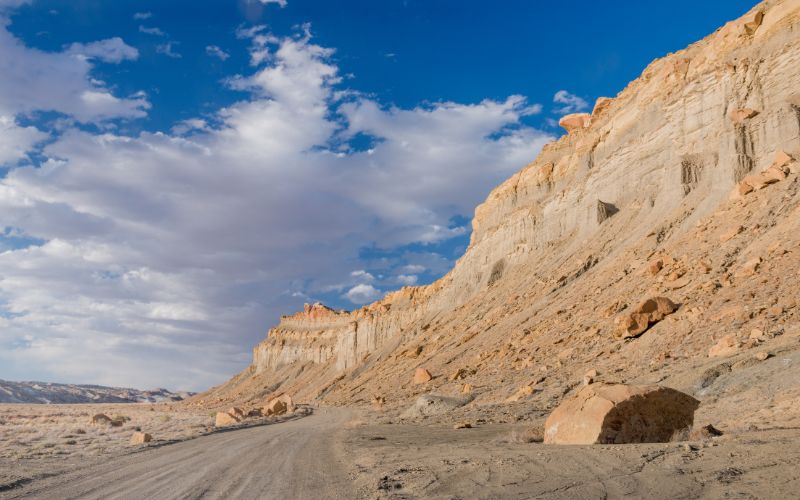Outdoor Exploration: Super Hiking Beyond the Trails 2023
Outdoor Exploration – Hiking, a pursuit that embodies the spirit of adventure, offers countless opportunities to explore the natural world. However, true outdoor exploration goes beyond the well-trodden trails, into the heart of uncharted territories. In this comprehensive guide to outdoor exploration, we will delve into the art of venturing beyond established paths, discovering remote landscapes, and forging your path through the wilderness. Whether you’re a seasoned explorer or an aspiring adventurer, this article will equip you with the knowledge and inspiration to hike beyond the trails.

Table of Contents – Outdoor Exploration
Introduction – Outdoor Exploration
Outdoor Exploration: Unveiling the Unknown
Hiking is more than a recreational activity; it is a gateway to outdoor exploration. While established trails offer incredible journeys into the wilderness, there exists a world beyond these paths that beckons the intrepid traveler. True outdoor exploration is about pushing boundaries, embracing the unknown, and experiencing the raw beauty of unspoiled landscapes.
This guide is an ode to those who seek more than the familiar. It is an invitation to delve into the depths of nature, where every step unveils new wonders. Beyond the trails lies a realm of uncharted territory, where the thrill of discovery reigns supreme. Whether you aspire to summit remote peaks, traverse untamed wilderness, or chart your course through pristine forests, this article is your compass to navigate the unexplored.

Outdoor exploration is a testament to human curiosity, resilience, and adaptability. It is an art that blends physical prowess with mental fortitude, demanding self-reliance and a deep connection with nature. In the pages that follow, we will explore the essence of outdoor exploration, from planning and preparation to safety considerations and ethical practices.
Let this guide be your inspiration to venture beyond the confines of established trails and embark on a journey that promises solitude, self-discovery, and a profound connection with the untamed world.
The Essence of Outdoor Exploration
Defining Outdoor Exploration
Outdoor exploration, at its core, is an exhilarating and multifaceted pursuit that transcends conventional boundaries. It represents an innate human drive to venture beyond the familiar and immerse oneself in the untouched, the wild, and the untamed. It is a quest for experiences that defy routine, challenge the body and mind, and foster a profound connection with the natural world.
The Essence of Outdoor Exploration
Outdoor exploration can be distilled into several defining elements that encapsulate its essence:
Self-Sufficiency and Adaptability
One of the fundamental tenets of outdoor exploration is self-sufficiency. Explorers rely on their skills, knowledge, and resources to navigate uncharted territory. This self-reliance extends to the ability to adapt and problem-solve in dynamic and unpredictable environments. Whether it’s foraging for food, purifying water from natural sources, or building shelter, outdoor explorers master the art of survival through adaptability.

Wilderness Immersion
Outdoor exploration immerses individuals in the wilderness, often far from the trappings of modern civilization. It offers an unfiltered encounter with the natural world, where the senses are heightened, and a deep connection with the environment is forged. The wilderness becomes a classroom, a sanctuary, and a source of profound inspiration.
Physical and Mental Challenge
Exploration takes individuals out of their comfort zones and into realms of physical and mental challenge. Navigating rugged terrain, enduring extreme weather conditions, and covering long distances are physical trials that build strength and resilience. Concurrently, exploration tests mental fortitude, demanding adaptability, decision-making under pressure, and the ability to confront fear and uncertainty.
Discovery and Adventure
At its core, outdoor exploration is about discovery and adventure. Each expedition holds the promise of uncovering hidden treasures, whether they are secluded waterfalls, ancient ruins, or wildlife in its natural habitat. Adventure is the lifeblood of exploration, characterized by unpredictability, excitement, and the thrill of the unknown.
Trailblazing and Navigational Prowess
Exploration often involves forging one’s path through uncharted terrain, where established trails are scarce or nonexistent. Trailblazing demands navigational prowess, proficiency in reading topographic maps, and the skill to use a compass effectively. These tools become essential for plotting one’s course and ensuring a safe return.
Types of Outdoor Exploration
Outdoor exploration takes various forms, each offering a unique experience. Here are some common types of outdoor exploration:
Bushwhacking
Bushwhacking involves trekking through dense vegetation, thick forests, and off-trail terrain. It requires strong navigational skills and the ability to navigate without established paths.
Off-Trail Hiking
Off-trail hiking takes hikers into remote areas without designated trails. It often includes ascents of unmarked peaks, traversing through rugged terrain, and navigating using topographic maps and compasses.

Wilderness Backpacking
Wilderness backpacking involves multi-day trips into remote wilderness areas. Explorers carry all their supplies, making self-sufficiency and lightweight packing essential.
Alpine Exploration
Alpine exploration explores high mountain environments, including glaciers, high-altitude peaks, and remote alpine meadows. It demands mountaineering skills and often requires technical gear.
River and Canoe Expeditions
River and canoe expeditions explore untamed waterways, requiring paddling skills, navigation, and wilderness camping. They offer a unique perspective on remote landscapes.
Desert Exploration
Desert exploration involves trekking through arid environments, navigating sand dunes, canyons, and rocky terrains. It demands careful water management and endurance.
Cave Exploration
Cave exploration takes adventurers underground to discover intricate cave systems. It requires specialized equipment and knowledge of cave safety.
The Call of the Unknown – Outdoor Exploration
What compels individuals to venture into the unknown, to seek the uncharted, and to embrace the challenges of outdoor exploration? It is the call of the unknown, the desire to witness the world’s hidden marvels, and the pursuit of experiences that push the boundaries of human capability.

As explorers, we stand on the precipice of discovery, where every step holds the promise of unveiling something new. The allure of outdoor exploration lies in the thrill of the unexplored, the solace of pristine landscapes, and the triumph of conquering challenges that lie off the beaten path.
Planning Your Outdoor Exploration
Preparation and Planning – Outdoor Exploration
Successful outdoor exploration begins with meticulous preparation and planning. Here are essential steps to ensure your adventure is both safe and fulfilling:
Research Your Destination – Outdoor Exploration
- Topographic Maps: Study topographic maps of the area you plan to explore. Identify key landmarks, water sources, and potential hazards.
- Local Knowledge: Seek information from local experts or experienced explorers who have ventured into the same area. Their insights can be invaluable.
- Weather Forecast: Check the weather forecast for the region and be prepared for changing conditions.
Safety Measures – Outdoor Exploration
- Emergency Plan: Develop a detailed emergency plan that includes contact information for emergency services and a trusted contact who knows your itinerary.
- First Aid Skills: Equip yourself with first aid skills and a comprehensive first aid kit suitable for remote environments.
- Communication: Carry reliable communication devices such as satellite phones, emergency beacons, or two-way radios for areas without cell coverage.

Navigation Tools – Outdoor Exploration
- Maps and Compass: Bring topographic maps and a compass and know how to use them effectively. GPS devices can be useful but should not be relied upon as the sole means of navigation.
- GPS Devices: If you use GPS devices, ensure they are fully charged and have updated maps for the area you’re exploring.
Gear and Equipment – Outdoor Exploration
- Appropriate Gear: Select gear and clothing suitable for the terrain and climate of your destination. Consider specialized equipment for extreme environments.
- Food and Water: Plan your meals and carry an adequate supply of food and water. Include purification methods for natural water sources.
- Shelter: Depending on the duration of your exploration, carry suitable shelter options, such as tents, tarps, or bivy sacks.
Leave No Trace Principles
- Minimize Impact: Adhere to Leave No Trace principles by minimizing your impact on the environment. Pack out all trash, use established campsites when possible, and avoid disturbing wildlife.
Permits and Regulations
- Permits: Check if you need permits or permissions to explore specific areas. Obtain permits in advance, if required.
- Regulations: Familiarize yourself with local regulations, including fire restrictions and camping regulations.
Trail Partners
- Solo vs. Group: Decide whether to explore solo or with a group. Each option has its advantages and considerations. Traveling in a group can enhance safety but may require more logistics.
- Buddy System: If exploring with others, establish a buddy system to ensure everyone’s well-being.
Fitness and Skills
Outdoor exploration often demands a higher level of fitness and specific skills compared to standard hiking. Consider the following:
- Physical Fitness: Build endurance, strength, and cardiovascular fitness through regular exercise and training specific to your chosen terrain.
- Technical Skills: Depending on your exploration type, acquire necessary technical skills such as rappelling, climbing, or wilderness survival techniques.
- Training: Practice outdoor skills and techniques before embarking on a major exploration. Training can enhance your confidence and competence.
Safety and Ethical Considerations
Safety in Outdoor Exploration
Safety is paramount in outdoor exploration. The remoteness and potential hazards of uncharted territory require careful consideration of safety measures:
Risk Assessment
- Evaluate Risks: Continually assess risks during your exploration. Be prepared to adjust your plans if conditions become unsafe.
- Avalanche Safety: In alpine environments, assess avalanche risk and carry necessary equipment such as beacons, shovels, and probes.
Weather Awareness
- Weather Updates: Stay informed about weather conditions, especially in mountainous regions where weather can change rapidly.
- Storm Avoidance: In thunderstorm-prone areas, plan your exploration to avoid exposed terrain during stormy weather.
Wildlife Awareness
- Animal Encounters: Familiarize yourself with the wildlife in your chosen area and learn how to safely coexist with animals. Carry bear spray or deterrents where needed.
Leave a Detailed Itinerary
- Inform Others: Share your exploration plans, including your intended route, expected return date, and emergency contacts, with a trusted friend or family member.
Emergency Protocols
- Emergency Response: Establish clear emergency response protocols, including when and how to activate emergency communication devices.
- Self-Rescue: Develop self-rescue skills and know how to administer first aid in remote settings.
Ethical Considerations
Responsible outdoor exploration includes ethical considerations to preserve the wilderness and respect its inhabitants:
Leave No Trace
- Pack Out All Trash: Ensure you carry out all trash, including food scraps and used tissues. Leave natural areas as you found them.
- Campfire Ethics: Follow established campfire regulations. Use camp stoves for cooking rather than making fires.
- Respect Wildlife: Observe wildlife from a distance and avoid disturbing their natural behaviors. Do not feed wildlife.
- Stay on Trails: Whenever possible, stick to established trails and avoid creating new ones to protect fragile ecosystems.
- Minimize Noise: Keep noise levels to a minimum to preserve the tranquility of the wilderness and respect other explorers.
- Responsible Camping: If camping in pristine areas, camp at least 200 feet away from lakes and streams to protect water quality.
Conclusion
In the vast realm of outdoor exploration, every journey is an odyssey, every step a revelation, and every moment an opportunity to transcend the ordinary. As we conclude this comprehensive guide to outdoor exploration, we stand at the precipice of discovery, our hearts brimming with anticipation, and our spirits buoyed by the call of the unknown.
Outdoor exploration is not merely a pastime; it is an art form that celebrates human curiosity, resilience, and adaptability. It beckons adventurers to venture beyond the confines of established trails, into the heart of pristine landscapes, and toward the challenges that lie off the beaten path. It is a symphony of self-sufficiency, wilderness immersion, physical and mental challenge, discovery, and adventure—a symphony that resonates in the soul of every explorer.
As you embark on your own journey of outdoor exploration, let these words be your compass. Preparation and planning become your allies, ensuring your safety and the fulfillment of your adventure. The wilderness becomes your classroom, offering profound lessons in self-sufficiency, adaptability, and the art of survival. Navigational skills become your guiding star, leading you through uncharted territory with confidence.
Safety and ethical considerations are your unwavering companions, ensuring that you leave a minimal footprint in the pristine environments you encounter and that you return from your expeditions with cherished memories and lessons learned. Physical fitness and acquired skills empower you to surmount the challenges that nature presents, revealing the depths of your own capabilities.
In the art of outdoor exploration, you become both the artist and the masterpiece. With every stride, you paint your experiences across the canvas of the wild, crafting a narrative of courage, resilience, and wonder. You are the storyteller, recounting your encounters with hidden waterfalls, ancient ruins, and the mesmerizing dance of wildlife in its natural habitat.
The wilderness becomes your sanctuary—a realm where solitude is a cherished companion, where silence speaks volumes, and where the heartbeat of the Earth syncs with your own. It is a sanctuary where moments of awe are captured in the rustle of leaves, the whisper of the wind, and the brilliance of starlit nights.
So, as you heed the call of the uncharted, remember that the heart of the wilderness beats in harmony with your own. It is a place of wonder, a sanctuary for the spirit, and a source of inspiration for those who dare to seek its secrets. The unexplored terrain that beckons you offers not only challenges but also a canvas upon which you paint your most vivid memories.
In every exploration, in every footstep, and in every moment of wonder, you become part of the timeless story of adventurers who dared to embrace the unknown. Outdoor exploration is your invitation to step beyond the trails, to venture beyond the known, and to traverse the boundaries of the familiar.
So, as you stand on the threshold of your next adventure, may your heart be filled with the thrill of the uncharted, may your spirit be steeled by the challenges that lie ahead, and may your soul be nourished by the boundless beauty of the natural world. Embrace the journey, savor the moments, and heed the call of the wild.
Happy exploring!






